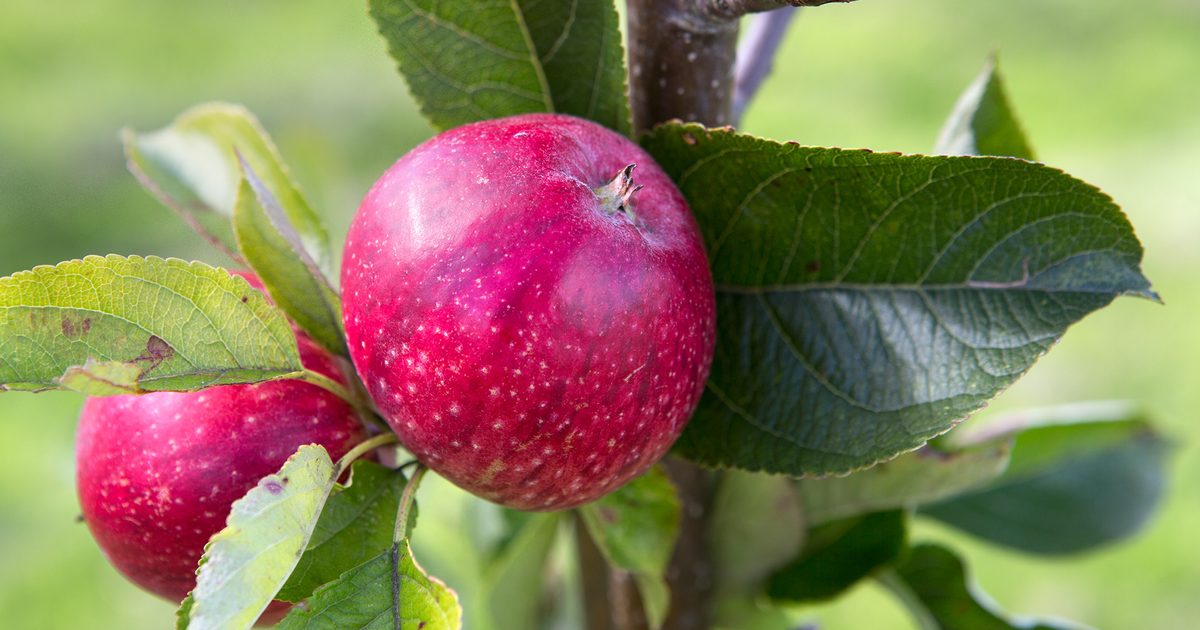When choosing your apple tree, concentrate on what Pollination Group the variability is in, along with the rootstock the variability is grown on. All apple timber revenue from two or additional apple timber rising shut by to produce an excellent crop. These two further varieties have to be fully totally different to the distinctive and should be within the equivalent or adjoining pollination groups because the distinctive.
This talked about, self-fertile apple varieties, ‘Granny Smith’ for example, will nonetheless produce a crop with out totally different apple timber rising shut by. So go for a self-fertile choice when you occur to solely have room for one.
To hunt out out additional about fully totally different rootstocks, and the benefits of each, attempt our data to fruit tree rootstocks.
Further on rising apples:
Attempt just a few of the best varieties to develop, beneath.

‘Granny Smith’
This revered consuming (or dessert) apple is favored for its company, crisp texture, giving it an excellent crunch when bitten into. ‘Granny Smith’ is in Pollination Group 3 – develop two or additional apple varieties from Group 2, 3 or 4 shut by for worthwhile pollination. Self-fertile.
‘Braeburn’
‘Braeburn’ is an consuming apple with a sweet flavour and rosy pink colour. This self-fertile choice is current in Pollination Group 4 and could possibly be pollinated by totally different apples in Groups 3, 4 and 5. Use this choice to make a delicious tarte tatin.
‘Falstaff’
‘Falstaff’ is a self-fertile consuming apple, acknowledged for being a heavy cropper with an excellent, tangy crunch. Good for juicing. Pollination Group 3. The fastidiously related ‘Purple Falstaff’ has pores and pores and skin that is flushed pink when ripe.
‘Adam’s Pearmain’
‘Adam’s Pearmain’ is an ordinary English dessert choice with nutty flavour that is additional savoury than others. This self-sterile choice is current in Pollination Group 2 – develop two or additional fully totally different varieties in Groups 1, 2 or 3 shut by for worthwhile pollination.
‘Bramley’s Seedling’
‘Bramley’s Seedling’, also referred to as merely ‘Bramley’, is the standard cooking apple. Recognized for its sharp, acidic flavour, it makes a delicious puree and could be utilized in muffins and crumbles. The first tree of this choice was grown from seed in 1809, and continues to be alive and productive. Self-sterile, Pollination Group 3.
‘Redlove Interval’
‘Redlove Interval’ is among the many few apples to have pink flesh, with a flavour that is every sweet and tangy. Eat straight from the tree or try cooking with it – the pink flesh will protect its colour. Self-sterile – develop fully totally different varieties shut by.
‘Cox’s Orange Pippin’
‘Cox’s Orange Pippin’ is taken into consideration by many, cooks included, to have the simplest flavour of any apple. A versatile apple that may be utilized in sweet and savoury dishes, cider and juices. The draw again is that it has poor sickness resistance and dislikes chilly, moist circumstances. Self-sterile, Pollination Group 3.
‘Blenheim Orange’
This consuming apple has a surprising spicy, russet flavour that’s correctly suited to cooking, notably in making tarts and purees. Self-sterile, ‘Blenheim Orange’ is current in Pollination Group 3.
‘Lord Lambourne’
‘Lord Lambourne’ is a standard consuming apple with a sweet, tangy flavour and crisp flesh. An superior different for consuming modern or making juice. Properly-suited to colder, wetter areas. Pollination Group 2.
‘Captain Kidd’
‘Captain Kidd’ is a self-sterile choice in Pollination Group 3. It’s a good numerous to ‘Cox’s Orange Pippin’, being easier to develop nevertheless remaining an aromatic, crunchy apple. Greatest for juicing and making tarts.
Apple varieties that retailer correctly
- ‘Braeburn’
- ‘Granny Smith’
- ‘Gala’
- ‘Meridian’
- ‘Chivers Delight’
- ‘Cox’s Orange Pippin’
- ‘Adam’s Pearmain’
- ‘Bramley’s Seedling’
- ‘Egremont Russet’
- ‘Spartan’